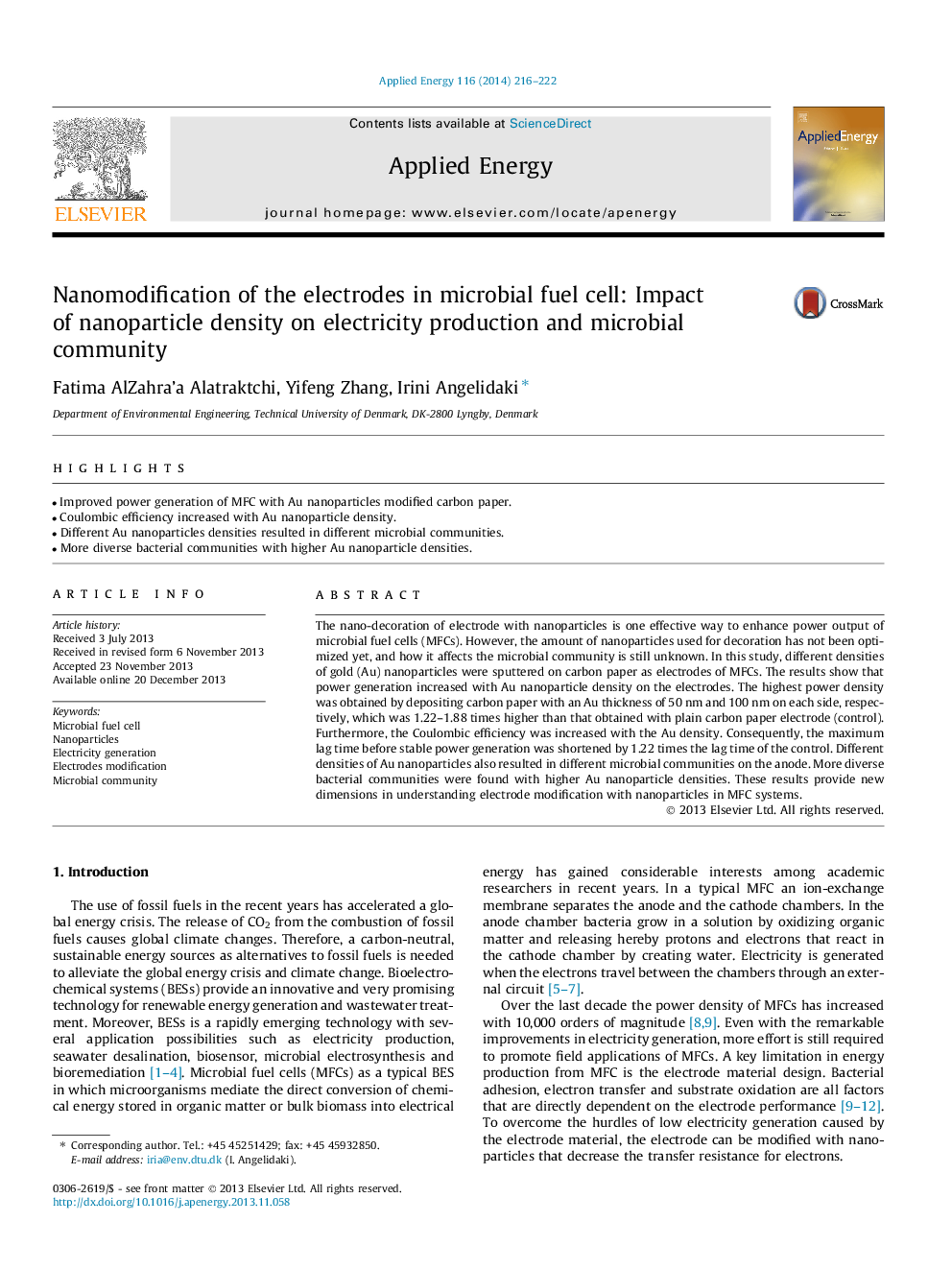| Article ID | Journal | Published Year | Pages | File Type |
|---|---|---|---|---|
| 6691242 | Applied Energy | 2014 | 7 Pages |
Abstract
The nano-decoration of electrode with nanoparticles is one effective way to enhance power output of microbial fuel cells (MFCs). However, the amount of nanoparticles used for decoration has not been optimized yet, and how it affects the microbial community is still unknown. In this study, different densities of gold (Au) nanoparticles were sputtered on carbon paper as electrodes of MFCs. The results show that power generation increased with Au nanoparticle density on the electrodes. The highest power density was obtained by depositing carbon paper with an Au thickness of 50Â nm and 100Â nm on each side, respectively, which was 1.22-1.88Â times higher than that obtained with plain carbon paper electrode (control). Furthermore, the Coulombic efficiency was increased with the Au density. Consequently, the maximum lag time before stable power generation was shortened by 1.22Â times the lag time of the control. Different densities of Au nanoparticles also resulted in different microbial communities on the anode. More diverse bacterial communities were found with higher Au nanoparticle densities. These results provide new dimensions in understanding electrode modification with nanoparticles in MFC systems.
Related Topics
Physical Sciences and Engineering
Energy
Energy Engineering and Power Technology
Authors
Fatima AlZahra'a Alatraktchi, Yifeng Zhang, Irini Angelidaki,
